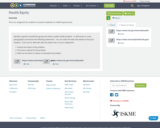
This is an assigment for students to research websites on Health Equity issues.
- Subject:
- Health, Medicine and Nursing
- Material Type:
- Homework/Assignment
- Author:
- Milan Motroni
- Date Added:
- 10/10/2020

This is an assigment for students to research websites on Health Equity issues.
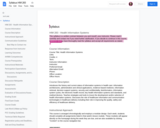
Introduces the history and current status of information systems in health care: information architectures, administrative and clinical applications, evidence-based medicine, information retrieval, decision support systems, security and confidentiality, bioinformatics, information system cycles, the electronic health record, key health information systems and standards, and medical devices. Teaches strategies and tools to insure the development and/or selection of health information systems. Discusses the role of healthcare information and communication technologies in healthcare delivery including their role in improving the quality, safety and efficiency of healthcare delivery.
Documents go with the course shell available via this link https://lor.instructure.com/resources/ebba206534fc4ec8b2a912e648d70a0d?shared

The purpose of this assignment is to educate and engage students in understanding the immune system's role in maintaining health and to apply this knowledge by designing a scientifically informed recipe card. This card will feature an immune-boosting recipe with carefully selected ingredients backed by immunological research, with the aim of promoting a deeper understanding of the connection between nutrition, immunity, and overall well-being.
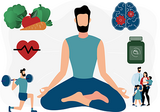
Jhoshue veras
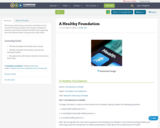
This lesson will introduce the basic foundation of our overall well-being, healthy self-concept, strategies to enhance mental and emotional health and recognizing how self-esteem relates to interactions with others.
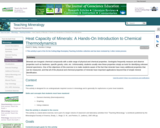
Minerals are inorganic chemical compounds with a wide range of physical and chemical properties. Geologists frequently measure and observe properties such as hardness, specific gravity, color, etc. Unfortunately, students usually view these properties simply as tools for identifying unknown mineral specimens. One of the objectives of this exercise is to make students aware of the fact that minerals have many additional properties that can be measured, and that all of the physical and chemical properties of minerals have important applications beyond that of simple mineral identification.
Please do not let the title of this exercise scare you away. Introducing students to thermodynamics is not the primary objective. Getting students to "do" science - to observe, record, and interpret experimental data - is the primary goal. Heat capacity just happens to be a good vehicle for this purpose.
(Note: this resource was added to OER Commons as part of a batch upload of over 2,200 records. If you notice an issue with the quality of the metadata, please let us know by using the 'report' button and we will flag it for consideration.)
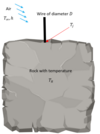
Heat Transfer problems for the WeBWorK open online homework system. Includes problems at the third-year level.
These problems need to be uploaded into an instance of WeBWorK to use/assign them.
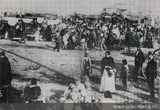
Wikipedia and Wikimedia Commons Renewable assigment to develop the local history of the district of Recoleta, in Santiago, Chile's metropolitan area.

This is a preview of how a person's life with high functioning depression is like...
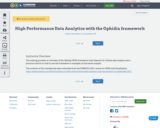
This training provides an overview of the Ophidia HPDA framework main features for climate data analysis and a practical tutorial on how to use the framework in examples of real-world analysis. It covers all the key concepts needed to effectively start using Ophidia in HPDA applications. The contents of this training have been extracted from the ESiWACE2 2021 course on HPDA and Visualisation. The code shown in the practical part is based on the Ophidia Python bindings: PyOphidia v1.9. For questions, please contact ophidia-info@cmcc.it

An online lesson for students to learn about transcription and translation that includes online resources and online interactable activities.
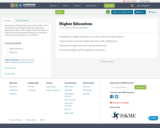
Development of Higher Education in Free India- various Commission Reports
National Policy on Education (Higher Education)- 1986, 1992(Revised)
Privatization of Higher Education including self-finances
Community colleges and their significance, Institutions
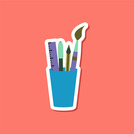
High-Incidence Disabilities are disabilities that are more often seen in the regular education classroom. This resource is intended to be used by pre-service teacher who are learning about disabilities in the classroom and how to make accommodations for all learners.
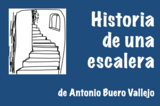
Materiales didácticos de trabajo.Situación de Aprendizaje (según la LOMLOE).Elaborado por Juan Carlos Moreno-Arrones Delgado.Historia de España y Lengua Castellana y Literatura Segundo de Bachillerato.
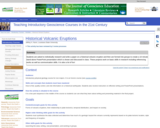
To prepare for this project, students read the chapter on volcanoes in Grotzinger et al. In class, students receive specific instructions on what to include in their report, presentation as well as a specific volcanic eruption to investigate. Students individually research the volcanic eruption to learn more about a topic of interest to most students as well as to learn how to do research and how to write a paper. In the group project, they learn how to make an effective presentation. This presentation is self-contained and is supposed to be geared to a middle school audience. Some students do a very good job at explain the basic concepts to a student in that age group which means they really understand it.
(Note: this resource was added to OER Commons as part of a batch upload of over 2,200 records. If you notice an issue with the quality of the metadata, please let us know by using the 'report' button and we will flag it for consideration.)
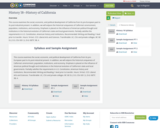
This course examines the social, economic, and political development of California from its pre-European past to its post-industrial present. In addition, we will exlpore the historical uniqueness of Calfornia's environment, population, institutions, and economy. Emphasis is placed on the influence of American political thought and institutions in the historical evolution of California's state and local governments. Partially satisfies the requirements in U.S. Constitution, American history and institutions. Recommended: Writing and Reading-1 level prior to transfer. Hours: 54 lect. CCS: Liberal Arts and Sciences. Transferable: UC, CSU and private colleges. BC GE D.2, D.3, CSU GE C.2, D.6; IGETC 3B, 4.
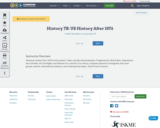
American history from 1876 to the present. Topics include industrialization, Progressivism, World Wars, Depression, the Cold War, the Civil Rights and Vietnam Era, and the 21st century. Emphasis placed on immigrant and racial groups, women, international relations, and contemporary topics. Total 54 hours lecture.
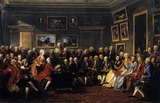
This resource is an engaging way to get your students in U.S. History or U.S. Government thinking about the founding principles of the U.S. Consitutiton. After learning about the basics of the Enlightenment Period and guided principles used in the creation of the U.S. government, students can think critically about topics and create a short satiracal video on TikTok.

This course introduces students to modern world history and geography. It provides an opportunity for students to learn and further develop foundational research and writing skills by incorporating practice into every class session. Early in the course, students select a country to study, then all research and writing activities are focused on that country. It also utilizes the United Nations Sustainable Development Goals to help students explore their country.The course utilizes openly licensed textbooks and publicly available materials as course materials.This survey course is intended for freshmen and sophomore-level students who are interested in exploring historical, political and social contexts beyond their own. Students will have ample opportunities to practice foundational skills including writing, research, source citation, critical thinking and public speaking.It was originally taught over 13 weeks as part of a Fulbright US Scholar grant in the International College at Tunghai University in Taichung Taiwan. It was developed with support from the Open Education for a Better World Program.

This is a video resource and 11 question quiz to go along with it. This is a great resource to learn more about the history of Braille.